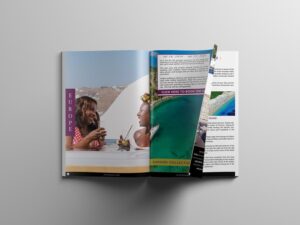
With travel backpack lightweight design at the forefront, adventure awaits those ready to explore with ease. These backpacks are not just storage solutions; they are essential companions that redefine how we travel, offering maximum mobility and comfort without the bulk. Lightweight backpacks utilize innovative materials and designs that cater to the modern traveler, ensuring that every journey is as enjoyable as it is memorable.
By embracing features that prioritize weight without sacrificing functionality, these backpacks enhance the travel experience, making it easier to navigate bustling airports or rugged trails. As we delve into the key elements that set lightweight travel packs apart, we’ll uncover how they can transform your adventures, allowing you to focus on the destination rather than the burden of heavy gear.
Lightweight Design Features
Traveling has evolved, and so have the backpacks we carry. A travel backpack designed with lightweight principles is not just about being easy to carry; it’s about enhancing the entire travel experience. These backpacks often boast features like streamlined designs, adjustable straps, and multiple compartments that promote organization without adding unnecessary bulk.The materials used in lightweight backpacks play a crucial role in their overall functionality.
Manufacturers often utilize advanced fabrics, such as ripstop nylon or polyester, which are not only durable but also incredibly light. These materials resist wear and tear while ensuring that the backpack doesn’t weigh the traveler down. Weight directly impacts a traveler’s experience; lighter backpacks allow for greater mobility, ease of transport through crowded areas, and less strain on the body during long treks.
Comparison with Traditional Backpacks
When comparing lightweight travel backpacks with traditional ones, it’s essential to note the distinct differences in purpose and design. Traditional backpacks tend to prioritize sturdiness and capacity over weight, often leading to a bulkier form. In scenarios like hiking or urban exploration, lightweight backpacks shine due to their minimal weight and aerodynamic design.However, each type has its advantages and disadvantages.
Lightweight backpacks are ideal for short trips or minimalist travelers who prioritize mobility. Conversely, traditional backpacks may offer more space for extensive gear, making them suitable for camping or long-distance trekking where capacity is critical. For instance, lightweight backpacks are perfect for day hikes, while traditional backpacks suit multi-day camping adventures where extra gear is essential.
Travel Accessories for Lightweight Backpacks
Several accessories complement a lightweight backpack, enhancing functionality without adding significant weight. These include packing cubes, lightweight rain covers, compression sacks, and portable chargers. Each of these accessories serves a unique purpose, streamlining packing and organizing essentials effectively.Here’s a table of recommended lightweight accessories:
| Accessory | Features | Benefits |
|---|---|---|
| Packing Cubes | Lightweight fabric, various sizes | Organizes clothing, maximizes space |
| Rain Cover | Water-resistant, compact | Keeps backpack contents dry |
| Compression Sacks | Reduces volume of bulk items | Enhances packing efficiency |
| Portable Charger | Lightweight, high-capacity | Keeps devices charged on the go |
Travel Advisory Insights
Travel advisories are vital when planning trips with a lightweight backpack. Different destinations may have specific safety concerns, regulations, or restrictions affecting what you can carry. Understanding these factors can save travelers from unexpected hassles.When considering travel advisories, it’s important to check for local laws regarding the types of gear allowed and safety guidelines, especially in remote areas. Travel advisors can provide valuable recommendations for suitable lightweight backpacks based on destination and personal needs, ensuring travelers are well-prepared.
Preparing for Travel with Anxiety
Dealing with travel anxiety can be daunting, especially when relying on a lightweight backpack for your essentials. Strategies such as creating a detailed packing list or practicing mindfulness techniques can help ease the burden. Organizing your backpack efficiently—ensuring all necessary items are easily accessible—can also reduce stress during preparations.Maintaining comfort while traveling light is essential. Consider using cushioned straps and adjusting the weight distribution of your backpack to make carrying it more manageable.
A well-organized pack can lead to a more enjoyable travel experience by minimizing the chaos that often accompanies preparing for a trip.
Travel Apps and Their Role
Travel apps can significantly enhance the experience of planning trips with a lightweight backpack. Many apps offer features to help optimize packing, create travel itineraries, and keep track of important documents. Some popular choices include TripIt, PackPoint, and Google Maps.Here’s a comparison table of travel apps based on user reviews:
| App Name | Key Features | User Ratings |
|---|---|---|
| TripIt | Itinerary creation, trip management | 4.7/5 |
| PackPoint | Packing list generator, weather integration | 4.5/5 |
| Google Maps | Navigation, local recommendations | 4.8/5 |
Lightweight Design Trends
The latest trends in lightweight backpack design focus on innovation and sustainability. Brands are experimenting with eco-friendly materials that do not compromise on durability. Ultra-lightweight fabrics and smart construction techniques, such as seam sealing and minimal stitching, are trending in design.Some of the leading brands in lightweight travel backpack design include Osprey, Patagonia, and The North Face. These companies continuously push the boundaries of backpack design, ensuring travelers have functional yet stylish options.
Travel Jobs Related to Lightweight Gear
As the demand for lightweight travel gear grows, so too do the opportunities for travel-related jobs. Positions such as travel gear specialists, product testers, and sales representatives for outdoor gear companies are in high demand. Essential skills for these roles include a strong knowledge of travel gear, customer service experience, and an understanding of lightweight design principles.Salary expectations vary based on experience and location, but there is potential for competitive compensation, especially in specialized roles that cater to a niche market focused on lightweight travel.
Travel Abroad with Lightweight Gear
When traveling abroad with a lightweight backpack, packing strategies are crucial. Prioritize versatile clothing and multi-functional gear to maximize space and minimize weight. Additionally, understanding legal considerations, such as carry-on restrictions and customs regulations, is vital for hassle-free travel.Here’s a checklist to ensure you have all essentials for an international trip:
- Passport and necessary visas
- Travel insurance documentation
- Lightweight clothing suitable for the destination
- Universal power adapter
- Portable charger
- Health and safety essentials (medications, hand sanitizer)
Travel Blogs on Lightweight Packing

Numerous influential travel blogs focus on lightweight packing strategies, offering tips and personal stories that resonate with minimalist travelers. Blogs like “The Minimalists” and “Travel Light” showcase successful lightweight travel experiences, inspiring others to adopt a similar approach.These blogs foster a community of like-minded travelers who share advice, packing lists, and stories about their adventures while traveling light. The shared experiences not only provide practical tips but also create a sense of camaraderie among travelers aiming to simplify their journeys.
Final Wrap-Up
In conclusion, the travel backpack lightweight design offers a remarkable blend of convenience, ease, and style that is essential for the modern traveler. Whether you’re trekking through the mountains or exploring a new city, these backpacks serve as the perfect blend of functionality and innovation. By choosing the right lightweight gear, you can enhance your travel experience, making every journey not just lighter, but more enjoyable and fulfilling.
Essential Questionnaire
What materials are best for lightweight backpacks?
Materials like nylon and polyester are preferred for their durability and lightness, often with water-resistant coatings to enhance functionality.
How much should a lightweight backpack weigh?
A lightweight backpack typically weighs between 1 to 3 pounds, depending on its size and features.
Can lightweight backpacks be used for hiking?
Yes, many lightweight backpacks are designed specifically for hiking, offering features like hydration reservoirs and adjustable straps for comfort.
Are there any drawbacks to lightweight backpacks?
While they are easier to carry, lightweight backpacks may lack some of the durability and storage capacity found in traditional backpacks.
How do I choose the right size for a lightweight backpack?
Consider the length of your trip and what you need to carry; typically, 40-60 liters is suitable for weekend trips, while daypacks range from 15-30 liters.





